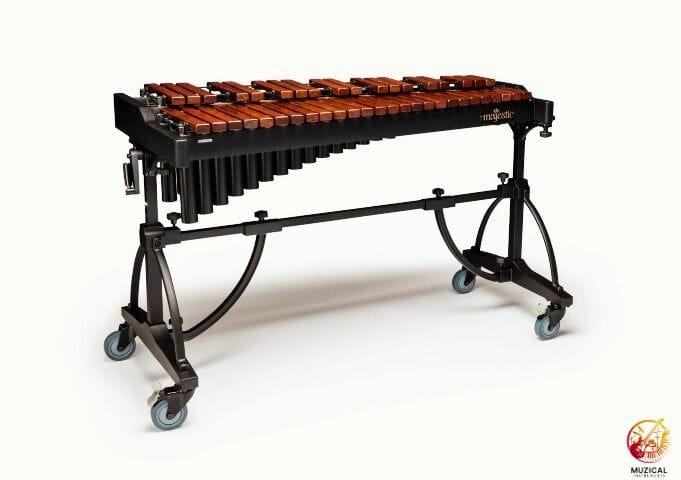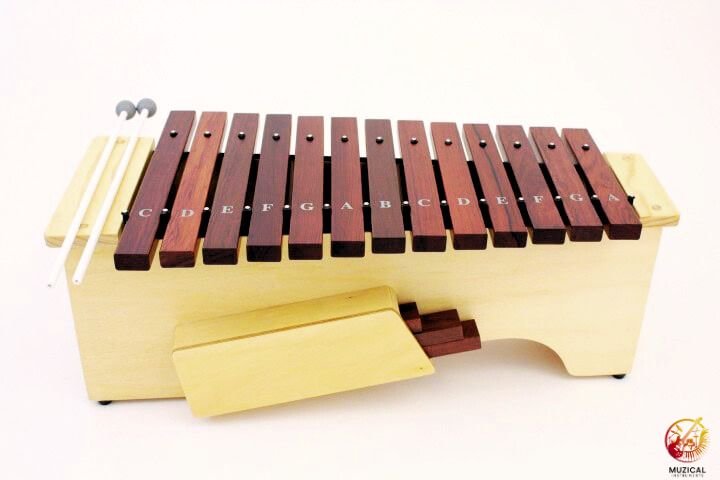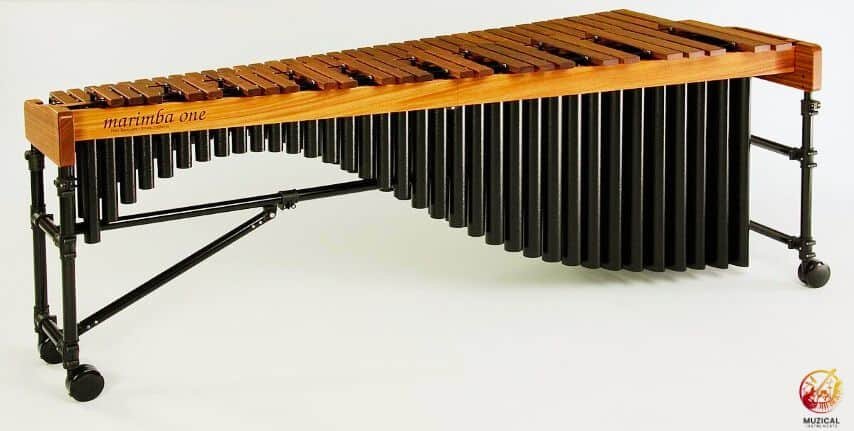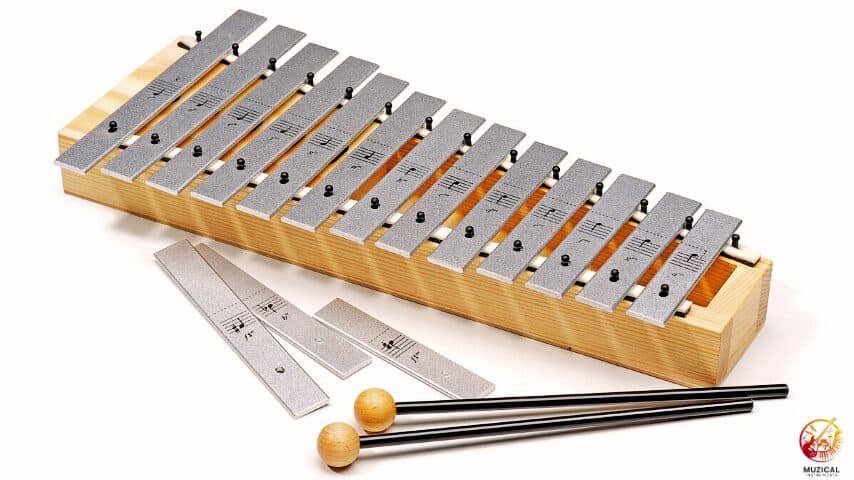How Many Bars a Xylophone Has? A Simple Guide for Curious Musicians
The question of how many bars a xylophone has doesn’t have just one simple answer. The number of bars changes completely based on the instrument’s job, from a small one for a student to a giant one for a professional musician.
Knowing why they’re different is the key to understanding this awesome instrument.
This guide will show you the different types of xylophones you might see in a classroom or on a concert stage. You’ll learn exactly why their sizes are so different and how they compare to other instruments in the percussion family, like the marimba and glockenspiel.
What’s the Normal Size for a Concert Xylophone?

When professional musicians talk about a xylophone, they’re usually thinking of a concert xylophone. This is the kind you’ll see on stage with a symphony orchestra or a professional wind band. These are the big ones! A standard concert xylophone usually has a range of either 3.5 or 4 octaves.
So, what does that mean in terms of bars?
- A 3.5-octave xylophone has 44 bars. This includes all the natural notes (the white keys on a piano) and the accidental notes (the black keys).
- A 4-octave xylophone is a bit bigger and has 49 bars.
This specific range is the xylophone’s “sweet spot.” Its sound is famously bright, sharp, and loud. Composers use the xylophone to play high, fast melodies that can be heard even when the whole orchestra is playing.
Think of the spooky, rattling bone sounds in the famous piece Danse Macabre that’s a xylophone! The bars are made from a very hard wood called rosewood or a special synthetic material. When you strike these bars with a hard mallet, you get that classic, piercing sound that makes the xylophone so unique and exciting. The number of bars gives a professional player all the notes they need to play this challenging music.
How Many Bars Does a Xylophone for Students Have?

While professional xylophones are large, the ones used for teaching music are much smaller and simpler. This is where you really see a big difference in how many bars a xylophone has. These are often called Orff xylophones, named after Carl Orff, a composer who created a popular method for teaching music to children.
These instruments are cleverly designed for learning. The coolest feature is that you can actually remove the bars! A teacher can take off certain notes to make it easier for a student to play a song without hitting a “wrong” note. Instead of having all the notes of a chromatic scale, they usually just have the notes of a basic major scale (diatonic scale).
Here’s a look at common student xylophones:
- Soprano Xylophones: These are the smallest and have the highest pitch. A typical soprano model has about 13 bars. It usually includes a C major scale plus a couple of extra F# and Bb bars so kids can play in different keys.
- Alto Xylophones: These are pitched lower than the soprano. They also usually come with 13 bars and the same extra notes.
- Bass Xylophones: These are the biggest of the student models, with large, thick bars that make a deep sound. They might have anywhere from 11 to 16 bars.
The point of these instruments isn’t to play complex orchestra music. It’s to help kids explore sound and rhythm in a fun, easy way. By setting up a simple five note scale (a pentatonic scale), a child can improvise and create music that always sounds good. It’s a fantastic way to build confidence.
So, while a student xylophone has far fewer bars, it’s the perfect tool for the job of learning.
Expert Insight: Buying a Kid’s Xylophone
If you’re buying a xylophone for a young learner, don’t just look for the one with the most bars. The quality of the sound is way more important. A well made student xylophone with 13 beautiful sounding wooden bars is much better than a cheap toy with 25 tinny metal keys that are out of tune. The goal is to make a child fall in love with making music, and a pleasant sound is the first step!
Does a Marimba Have More Bars Than a Xylophone?
Yes, it absolutely does! A marimba almost always has more bars than a xylophone, and for a very good reason. It’s all about the sound and the job the instrument is meant to do.

Think of the xylophone as the loud, energetic one in the family. Its sound is bright and doesn’t last long. The marimba is its warmer, gentler cousin. Its sound is rich, deep, and resonant, it sings for a long time after you strike the bar.
To create this warm, full sound, the marimba needs a much bigger range, especially on the low end. It acts more like a “wooden piano,” able to play deep bass notes and full chords.
Let’s break down the differences:
| Feature | Xylophone | Marimba |
|---|---|---|
| Typical Range | 3.5 to 4 octaves | 4.3 to 5 octaves |
| Typical Bar Count | 44 to 49 bars | 52 to 61 bars |
| Bar Material | Rosewood or synthetic | Honduras Rosewood (known for warmth) |
| Resonators | Short, straight tubes | Long, curved tubes to make bass notes richer |
| Sound | Bright, sharp, and short | Warm, mellow, and long |
A professional 5-octave concert marimba is the standard today, and it has 61 bars. This huge range lets players perform incredibly complex solo music, like Bach fugues or modern marimba concertos. The bars on a marimba are also thinner than a xylophone’s, and they are tuned to bring out a different set of harmonics, which helps create that signature warm hum. The long metal tubes underneath, called resonators, are also much larger on a marimba to amplify those deep, rich sounds.
So, you can see how many bars a xylophone has is directly related to its bright, punchy role, while the marimba’s higher bar count is all about providing that deep, lyrical, and chordal voice.
What About a Glockenspiel? How Many Bars Does It Have?
Now let’s look at the xylophone’s tiny, shiny cousin: the glockenspiel! In this matchup, the xylophone is definitely the bigger instrument with more bars.

The glockenspiel (which means “set of bells” in German) is the soprano of the mallet percussion family. It plays the highest notes, and its sound is pure, brilliant, and bell-like. To get this sound, its bars aren’t made of wood at all, they’re made of high carbon steel. Because its job is to add a high pitched sparkle to the music, it doesn’t need a huge number of bars like a xylophone or marimba.
A standard concert glockenspiel has a 2.5-octave range, which comes out to a total of 30 bars. Many student percussionists start with a portable version called a bell kit, which might have a slightly smaller range.
It helps to think of these instruments as singers in a choir:
- Marimba: The deep, rich bass and baritone voice.
- Xylophone: The strong, clear alto and tenor voice.
- Glockenspiel: The brilliant, shining soprano voice.
Each one is built perfectly for its part. The glockenspiel’s 30 steel bars are ideal for cutting through an orchestra with a magical shimmer, like in the famous music from The Nutcracker ballet. It would be silly to ask a glockenspiel to play low, warm notes, just like you wouldn’t ask a soprano to sing a bass part. Its bar count is just right for its high flying job.
Mallet Instruments by Bar Count
| Instrument | Typical Bar Count | Bar Material | Key Sound |
|---|---|---|---|
| Glockenspiel | 30 | Steel | Bright & Bell-like |
| Student Xylophone | 13 – 25 | Wood or Synthetic | Crisp & Dry |
| Concert Xylophone | 44 – 49 | Rosewood or Synthetic | Piercing & Sharp |
| Vibraphone | 37 | Aluminum | Mellow & Warm (with vibrato) |
| Concert Marimba | 52 – 61 | Rosewood | Resonant & Full |
What Decides How Many Bars a Xylophone Will Have?
So, we know the numbers can be very different. But what are the main reasons behind this? A few key things determine how many bars a xylophone has.
1. The Music It’s Made For
This is the #1 reason. A xylophone for an elementary school music class has just enough bars to teach simple songs and scales. An orchestra, on the other hand, needs a xylophone that can handle music written by hundreds of different composers over the years. A musician playing in the pit for a Broadway show might prefer a 3.5-octave model because it’s a bit easier to haul around but can still play almost everything needed. The job defines the tool.
2. Size and Cost
It’s simple, more bars means a bigger, heavier, and more expensive instrument. High quality rosewood is a precious material, so a 4-octave xylophone from a top brand like Yamaha or Adams is a serious investment. Many high schools and gigging musicians choose 3.5-octave models because they strike a great balance. They’re more affordable, fit better in a car or van, and are still fantastic professional instruments.
3. History and Tradition
The xylophone has been evolving for a long time. If you look at very old xylophones from the early 1900s, some only had 3 octaves. As composers started writing more demanding music for the instrument, manufacturers began adding more bars. The 3.5 and 4-octave models became the standard because that’s what the music called for. While most stick to these sizes, a modern player could even ask for a custom built xylophone with more bars for a special project, but that’s very rare.
So, the number of bars isn’t random at all. It’s a thoughtful choice based on what the instrument needs to do, who will be playing it, and how much it can cost.
Final Thoughts: It’s All About the Music
So, how many bars a xylophone has? The answer can be anything from 11 to 49. The key takeaway is that the number of bars is all about the instrument’s job.
A small student model is designed for learning, with just enough bars to make music fun and easy.
A large concert model has a huge range of bars so a professional can play any piece of music thrown at them.
From the classroom to the concert hall, the xylophone’s size is perfectly matched to its musical purpose.
Now that you know what to look for, listen closely the next time you hear a xylophone. Is it playing a simple, catchy tune that could fit on a student model? Or is it a wild, virtuosic solo that needs all 49 bars of a concert instrument?
Understanding the “why” behind the number of bars gives you a whole new way to appreciate this amazing member of the percussion family.
What’s the most memorable xylophone music you’ve ever heard?
FAQ: How Many Bars a Xylophone Has?
What are xylophone bars usually made of?
Xylophone bars are typically made from rosewood, which gives them their classic bright, sharp sound. Some modern xylophones use a synthetic material called Kelon, which is more durable and less affected by weather.
What’s the main difference between a xylophone and a marimba?
The biggest differences are sound and size. A xylophone has a bright, sharp, and short sound, while a marimba sounds warm, rich, and resonant. Marimbas are also much larger and have more bars, giving them a deeper, wider range of notes.
What’s the difference between a xylophone and a glockenspiel?
It comes down to material and pitch. A xylophone has wooden (or synthetic) bars and a medium to high pitch. A glockenspiel has steel bars, giving it a very high pitched, brilliant, bell like sound.
How many keys does a beginner xylophone have?
A good beginner or student xylophone, often called an Orff xylophone, usually has around 13 to 16 bars. These typically include the main notes of a major scale plus a few accidentals (sharps/flats) to allow for playing in different keys.
Can you remove the bars on a xylophone?
On professional concert xylophones, the bars are permanently fixed to the frame. However, on most student and Orff xylophones, the bars are designed to be removable. This is a great feature for teaching, as it allows instructors to isolate certain notes for exercises.
Why are there tubes under the xylophone bars?
Those tubes are called resonators. Each tube is cut to a specific length to match the pitch of the bar above it. Its job is to amplify the sound, making the note louder, clearer, and more focused. Without them, the xylophone would be much quieter.
